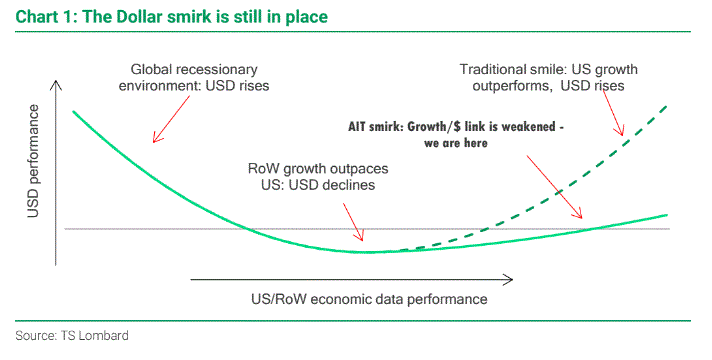TS Lombard with the note:
Powell reiterates AIT policy.In the end, the Jackson Hole policy retreat did not herald the announcement of a major policy shift (we never thought it would, but some investors were betting on a hawkish surprise.) Markets interpreted Fed Chair Powell’s speech as dovish, buying equities and selling USD. Indeed, Powell gave investors two important messages: first, that there is no linkage between the taper and rate hikes and the latter will not necessarily start as soon as the former comes to an end; and second, the bar for rate hikes is much higher than the bar for a taper, including the need to achieve maximum employment.AIT (average inflation targeting) is still the Fed’s explicit policy stance, meaning the policy rate will be more accommodative than it would otherwise have been at any given point in the cycle. Today we draw two key points from this stance: the dollar smirk and the transition risk to hawkish policy.
The dollar smirk is a structural headwind to USD. We first introduced the idea of the dollar smirk this time last year, highlighting how the Fed’s new policy stance marks the end of an era of strong dollar policy. Indeed, the central bank’s policy stance is now explicitly dollar-negative: all other things being equal, the policy rate will be lower than otherwise expected at a given point in the
cycle. Our US economist highlights why such a policy is a key pillar of support for the next leg of economic growth as it is focused on re-shoring production and reducing reliance on cheap imports from overseas.


